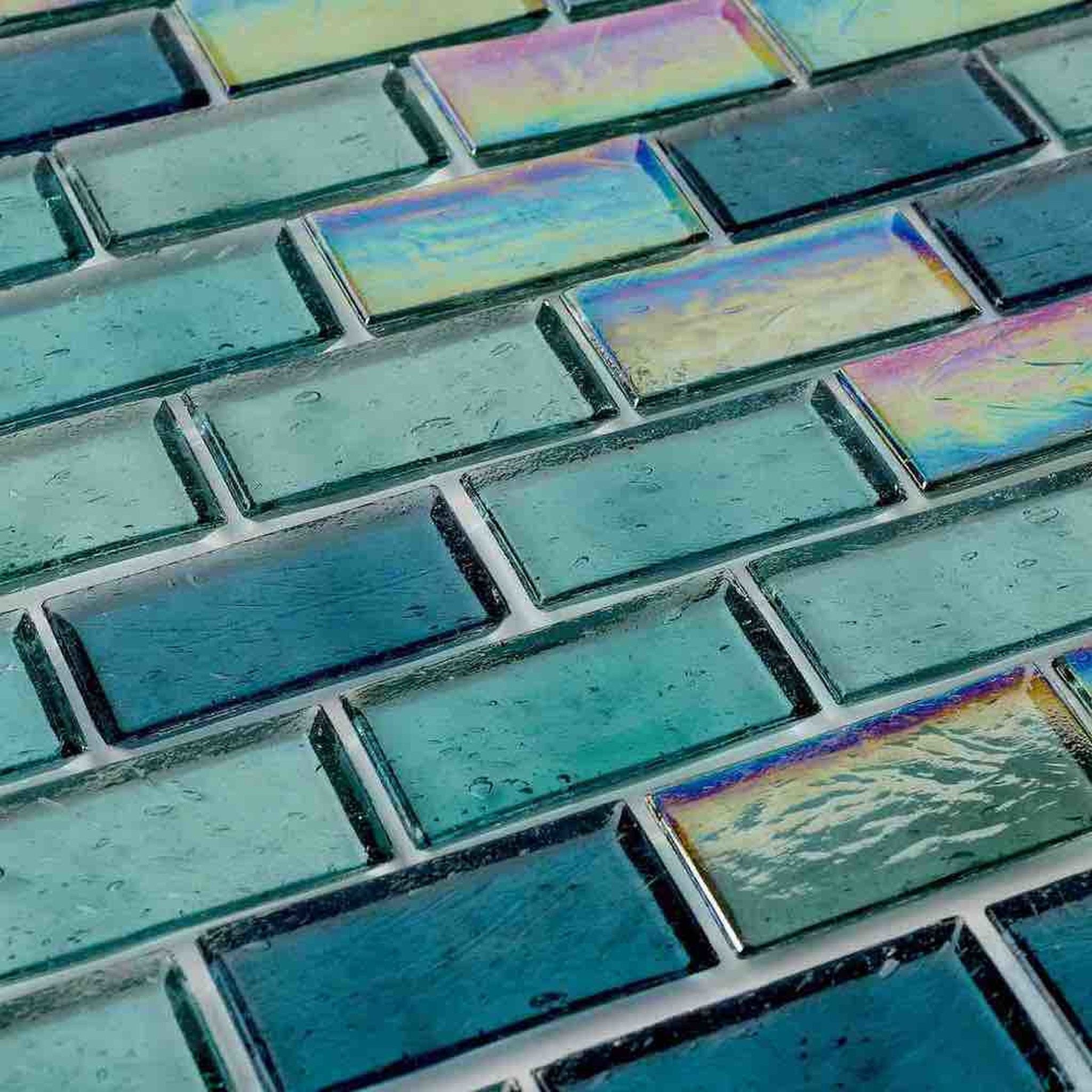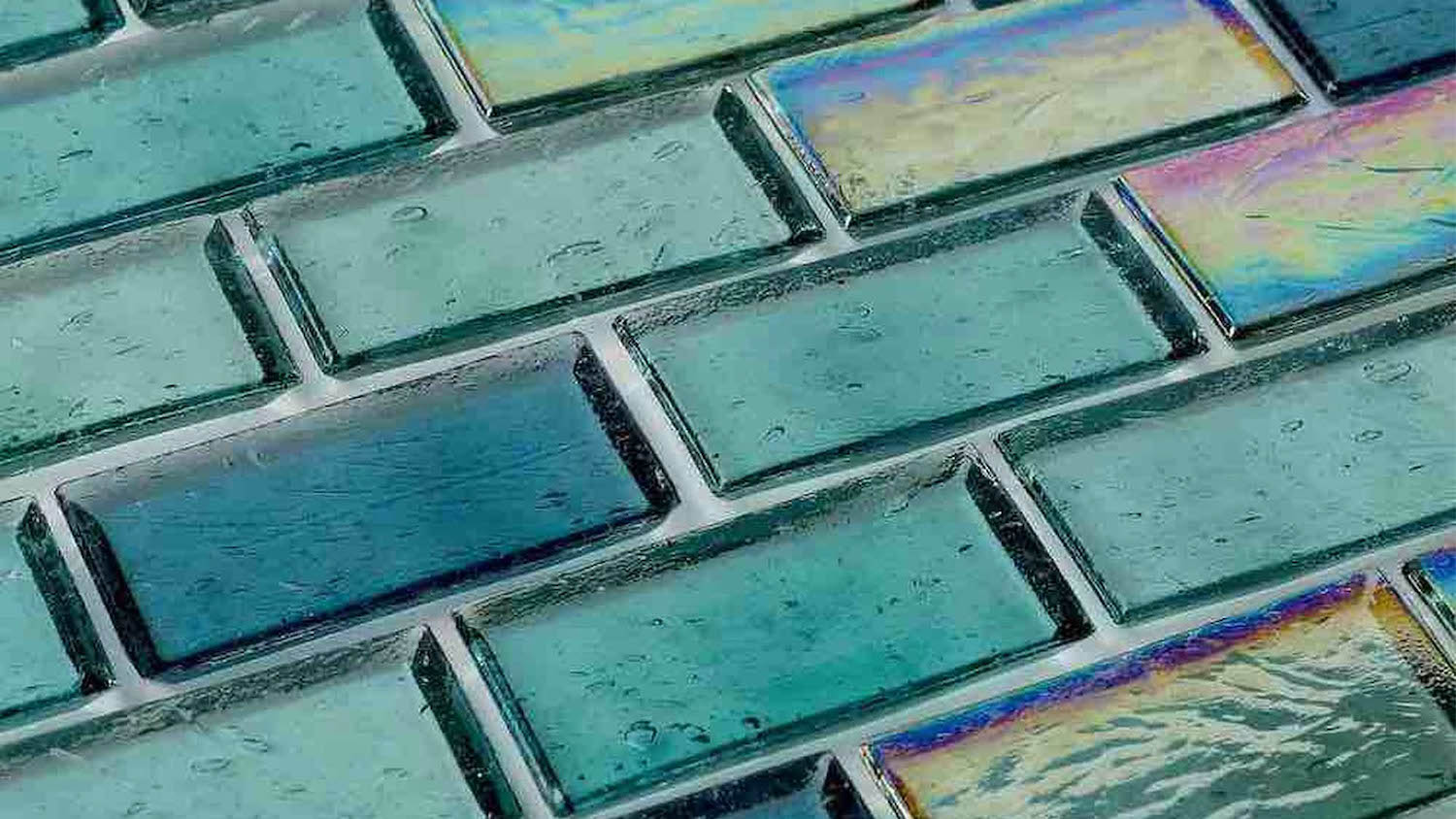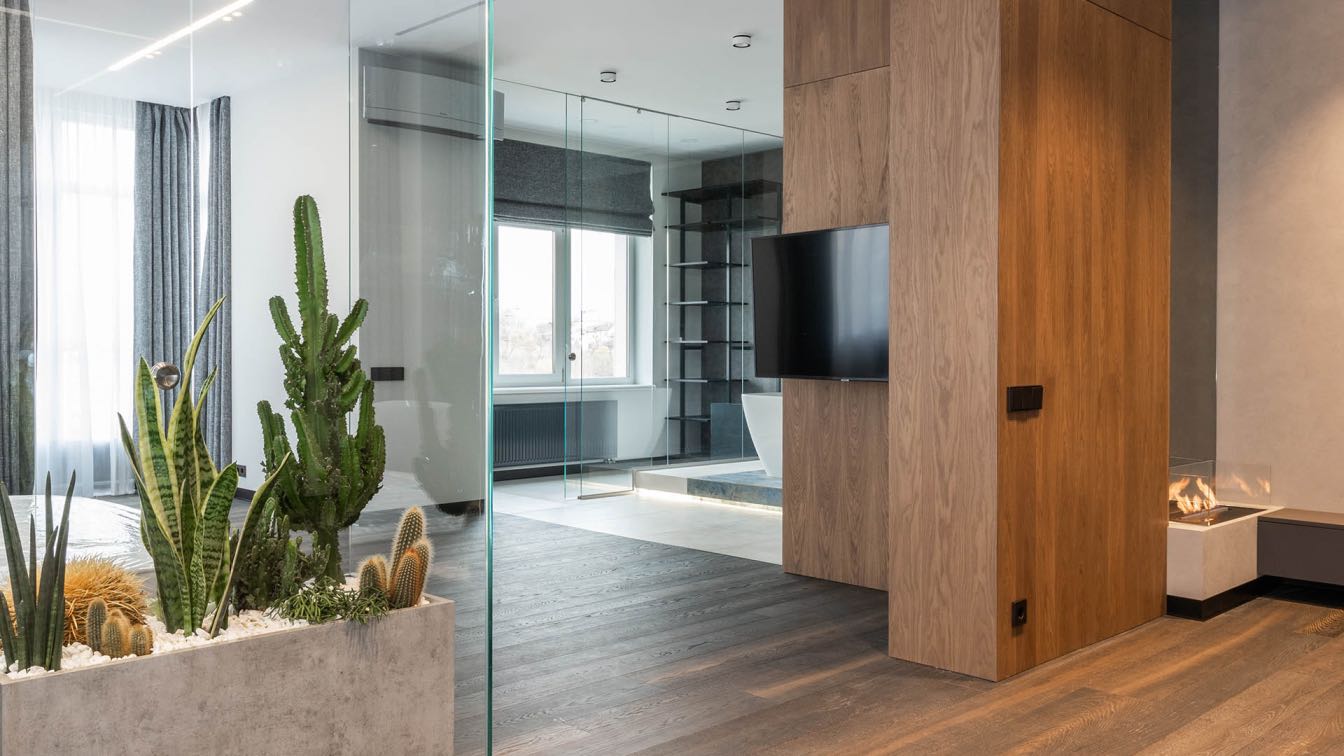For making tiles from recycled glass sources, raw materials must be free of contaminants. There are three common methods for making recycled glass tile.
Bathroom and kitchen designs are often the centerpiece of today's homes. Colors, accessories, lighting, style, and comfort are essential elements of these frequently used spaces. For homeowners who want to incorporate a unique design while remaining respectful of the environment, recycled glass tile can offer the best of both worlds.
Glass tile has many aesthetic and practical advantages over other flooring and cladding options. The most obvious thing is its appearance.
Glass tiles provide jewel-like transparency and touches of luxury that cannot be achieved with stone, ceramic tile, or solid surface materials. Compared to the feel of a granite or marble cave, glass baths evoke a feeling that is more reminiscent of a tranquil pond or secluded cove.

Making Recycled Glass Tile
For making tiles from recycled glass sources, raw materials must be free of contaminants (paper, dirt, packaging, etc.). Also, the materials must be of uniform color and source. Typical sources of recycled glass tiles are jars, bottles, or window glass.
Different types of glass have various colors and composition. So, glass waste must be cautiously sorted before use. Different glass sources also have various coefficients of expansion. As a consequence, the glass will not cool down to a uniform mass.
Different manufacturing methods lead to different results. There are three conventional methods for making recycled glass tile:
Small Mosaic Tile
Small mosaics are usually made of glass that is melted to the color of the glass, poured onto an iron table, and pressed with a shape (cookie cutter). This technique involves small batches and a laborious slab assembly process. The glass and color mixture is heated at a high temperature until it reaches a molten state. Once the pieces are cooled, they are separated, and the tiles can be assembled into easy-to-install sheets. This technique is well known and relatively simple to implement.
The final product consists of small mosaics with some color variations. This variation isn't complicated and may even be desirable. An ecological advantage of this technique is that broken tiles and production waste are minimized due to the small modulus of the tile. However, a disadvantage is a high heat required to heat the tile, around 1400 degrees C.
Large Glass Tile
The process for making two-by-two-inch tiles begins the same way as for small mosaics. The additional step is to store the glass in an oven, where it is heated over 500 degrees Celsius (932 degrees Fahrenheit). Then slowly cooled to make the resulting glass more robust and less brittle. There is more production waste when creating large tiles than small ones. Besides, larger tiles need more control for excellent color and quality.
Tile Made from Cullet
Cullet glass is glass that has crushed and then graded into particles of uniform size and color. Cullet glass-based tiles are produced by placing the glass in ceramic molds, heating the glass to 800 degrees Celsius (1472 degrees Fahrenheit). This technique produces a faster production cycle than small and large glass tile methods. But the colors of tiles are limited as the color depends on the original colors of the glass used.
Making Recycled Glass Countertops
Stained glass can be used to add a touch of color to countertops. Whether you choose to have a glass of a specific color or use whatever you hold, glass can spice up your countertop. One idea is to cut the bottom of a collection of wine bottles with a glass cutter.
Create a pattern with the round glass and break the remaining bottles to complete the design. You can mix green, blue, brown, and clear glass for a multi-colored countertop. While glass crushing machines can be purchased, a less expensive option is a mortar and glass crushing pestle, which you can find at stained glass supply stores.
The final look of your crushed glass countertop varies depending on the epoxy you choose. Clear epoxy is a common choice for stylish counters that display items such as coins, bottle caps, and wine bottle caps.
Note that the clear epoxy allows the surface under the counter to be visible between the spaces between the pieces of glass. This means you must paint the surface before starting the epoxy. Otherwise, you can choose white epoxy to contrast with the glass. Countertops finished with marine grade polyurethane for a durable, glossy finish.
Tips for Installing Recycled Glass Tiles
1. In general, installing recycled glass tiles will take longer, and more care should be taken with the tiles before fixing them in place.
2. After applying the thin layer, it is essential to break up and smooth out the comb marks. Otherwise, these marks will be visible through the glass and create an unattractive appearance.
3. When smoothing the thinnest, make sure there is an even layer of adhesive deep enough to secure and hold the tile.
Benefits of Using Recycled Glass Tile
The benefits for homeowners who choose recycled glass tile for the backsplash, bathroom floor, or any other important room in the home are twofold. First, recycled glass tiles are an excellent way to keep glass products from building up in landfills. In addition to helping preserve the environment, homeowners get a unique product that adds style to their home. Glass tiles are available in a variety of colors and finishes, both matte and gloss. They are a long-lasting way to decorate surfaces. Use glass cleaner to maintain them.
Glass tiles can be used anywhere, where regular ceramic tiles would be installed. They have the added benefit of being chemical and stain resistant, making them suitable for areas prone to moisture. They can be installed on floors, walls, counters, tabletops and more, and can be used both outdoors and indoors. Installing glass tile requires a bit more care than installing standard opaque ceramic tile. Builders and homeowners should be aware of these differences to ensure their trades get it right the first time.





